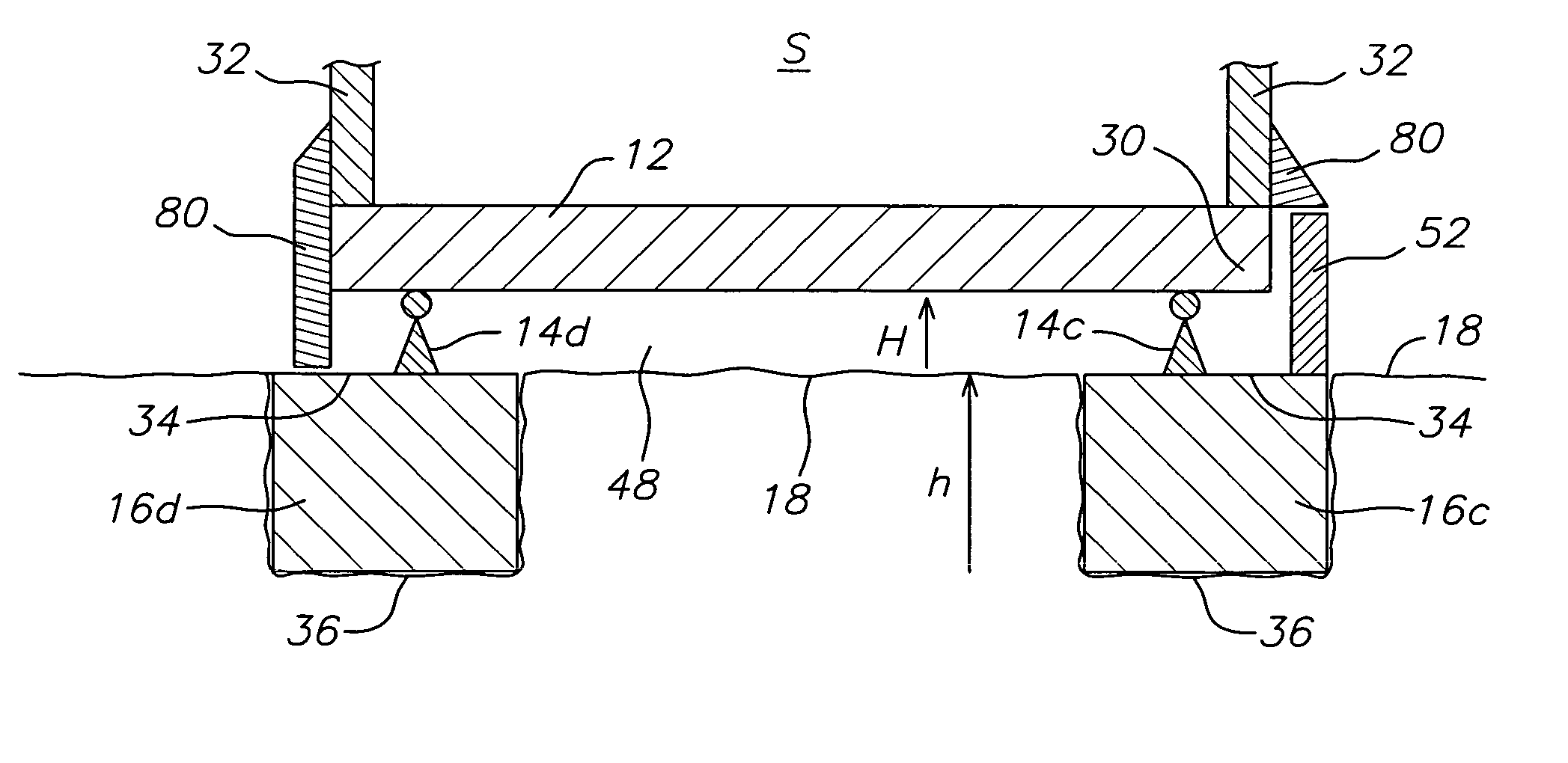Method of constructing structures with seismically-isolated base
a technology of isolation base and construction method, which is applied in the direction of foundation engineering, construction, building construction, etc., can solve the problems of difficult to gather meaningful and accurate seismic activity data, the cost of providing seismic-resistant features for life protection rarely exceeds two percent of the construction cost of new buildings, and the damage to non-structural structures and other problems to achieve the effect of better adaptation
- Summary
- Abstract
- Description
- Claims
- Application Information
AI Technical Summary
Benefits of technology
Problems solved by technology
Method used
Image
Examples
Embodiment Construction
[0035] Shown in FIG. 1 is a construction site with a structure S constructed in accordance with the present invention. The structure S has a rigid diaphragm 12 that is supported on a plurality of base isolation devices (BIDs) 14, which in turn are supported on footings 16 positioned in ground 18. As such, the structure S is generally isolated from seismic activity or vibration that occurs in the ground 18 surrounding the footings 16.
[0036] As understood by one of ordinary skill in the art, the rigid diaphragm 12 is a structure that is rigid in its own plane. As illustrated in FIGS. 2a-2e, rigid diaphragms 12 of the prior art are generally rectangular and constructed of concrete 20 with reinforcing steel 22. FIGS. 2b and 2c show one embodiment and FIGS. 2d and 2e show another embodiment. It is understood by one of ordinary skill in the art that the rigid diaphragm may be configured differently and be reinforced with different materials. For example, another suitable construction of ...
PUM
 Login to View More
Login to View More Abstract
Description
Claims
Application Information
 Login to View More
Login to View More - R&D
- Intellectual Property
- Life Sciences
- Materials
- Tech Scout
- Unparalleled Data Quality
- Higher Quality Content
- 60% Fewer Hallucinations
Browse by: Latest US Patents, China's latest patents, Technical Efficacy Thesaurus, Application Domain, Technology Topic, Popular Technical Reports.
© 2025 PatSnap. All rights reserved.Legal|Privacy policy|Modern Slavery Act Transparency Statement|Sitemap|About US| Contact US: help@patsnap.com



